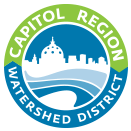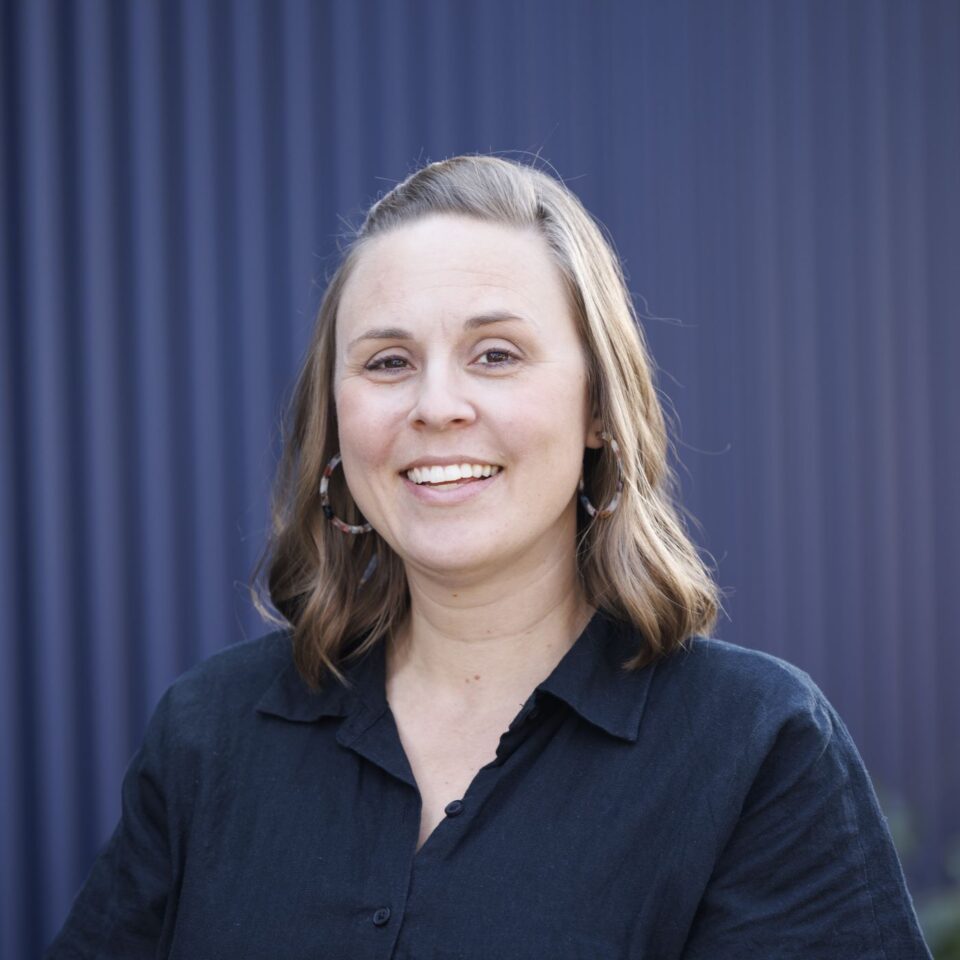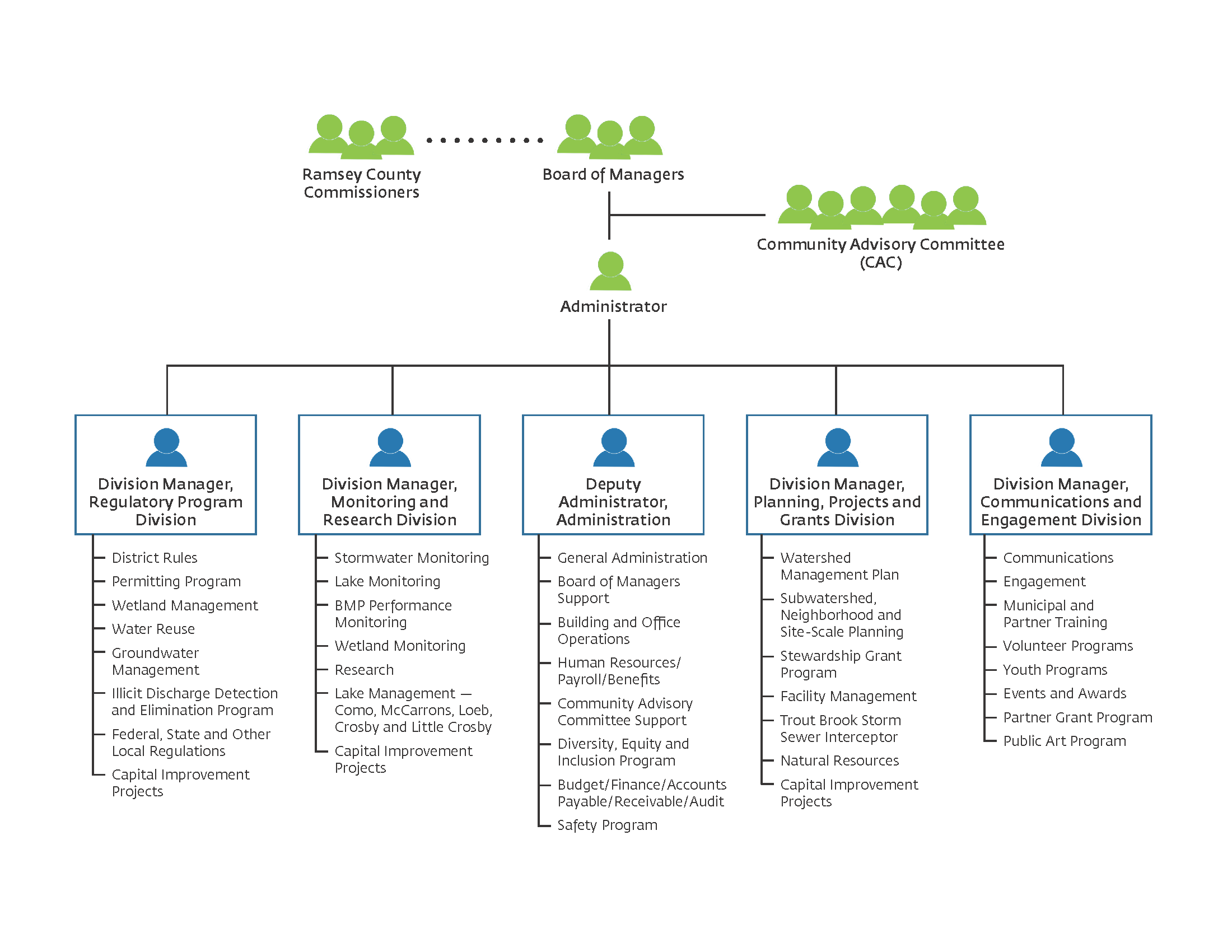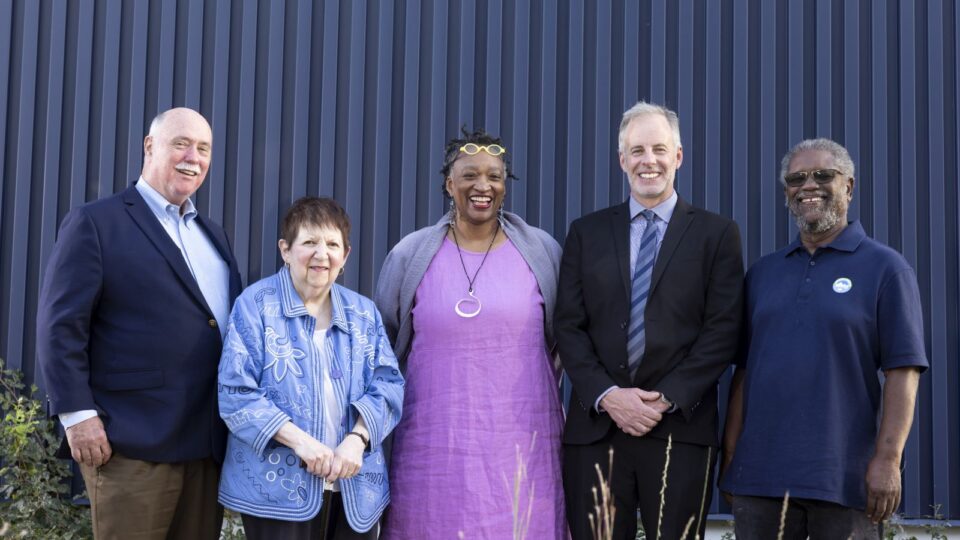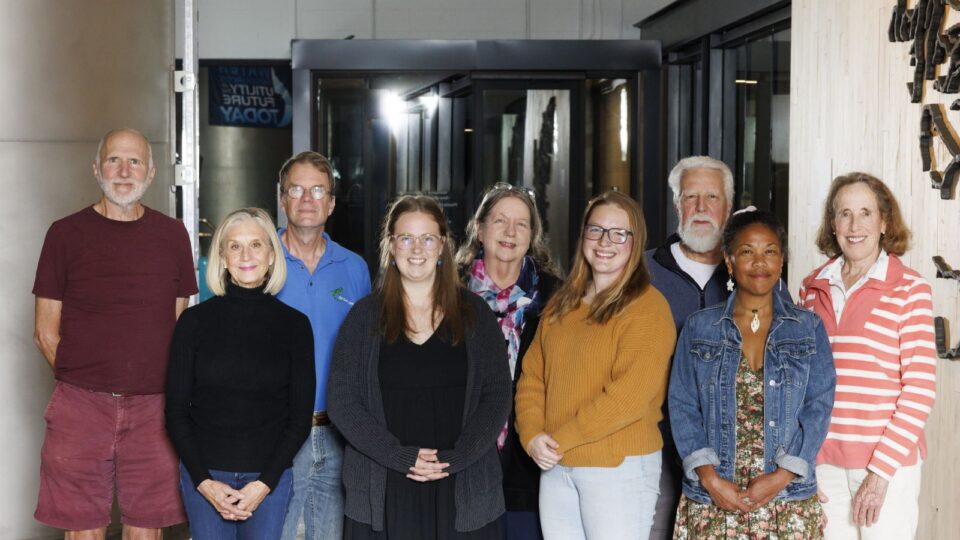The organizational and programmatic structure of Capitol Region Watershed District (CRWD) is presented in the figure above, updated in December 2022 from Figure 1-1 of the Watershed Management Plan (Plan). It includes the Board of Managers, advisory committees and staff. The District is led by a five-person Board of Managers that guides the implementation of the activities set forth in the Plan. Board Managers are appointed by the Ramsey County Board of Commissioners and serve a 3-year term.
The Board of Managers approves applications by District residents to join the Community Advisory Committee (CAC). The CAC assists the Board of Managers with organizational development, planning processes and program implementation, and strengthens the connections between CRWD and District residents.
The District Administrator is appointed and reviewed by the Board of Managers. The Administrator supervises the Deputy Administrator, the four Division Managers of the District, and all division staff. In the absence or unavailability of the Administrator, the Deputy Administrator will act in their place.
Administration Division programming includes general administration; Board of Managers support; building and office operations; human resources, payroll and benefits; CAC support; the Diversity, Equity and Inclusion Program; budget, finance, accounts payable and receivable, and audit; and the safety program.
Monitoring and Research Division programming includes stormwater monitoring; lake monitoring; Best Management Practices (BMPs) performance monitoring; wetland monitoring; research; lake management of Como, McCarrons, Loeb, Crosby and Little Crosby; and Capital Improvement Projects.
Regulatory Division programming includes the District Rules; the Permitting Program; wetland management; water reuse; groundwater management; Illicit Discharge Detection and Elimination Program; federal, state and other local regulations; and Capital Improvement Projects.
Planning, Projects and Grants Division programming includes the Watershed Management Plan; subwatershed, neighborhood and site-scale planning; the Stewardship Grant Program; facility management; Trout Brook Storm Sewer Interceptor; natural resources; and Capital Improvement Projects.
Communications and Engagement Division programming includes communications; engagement; municipal and partner training; volunteer programs; youth programs; events and awards; the Partner Grant Program; and the Public Art Program.
